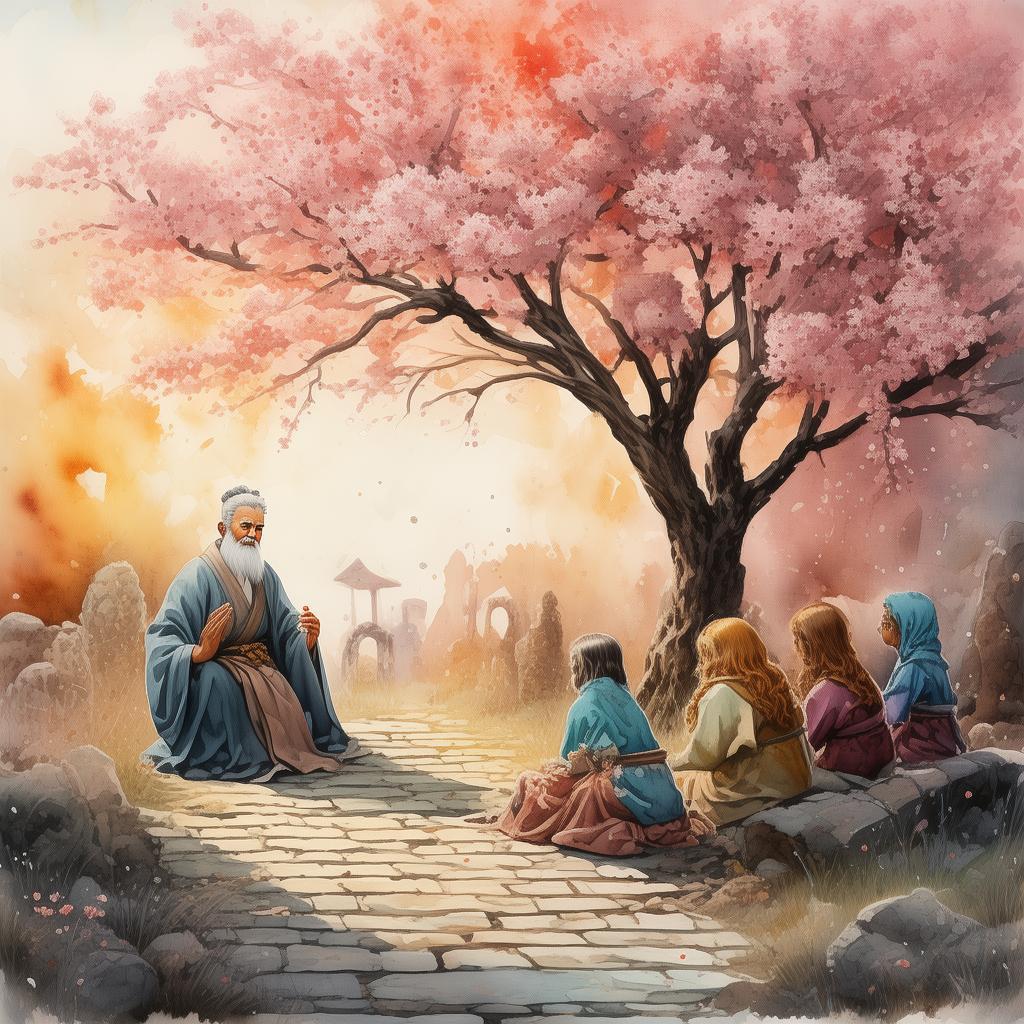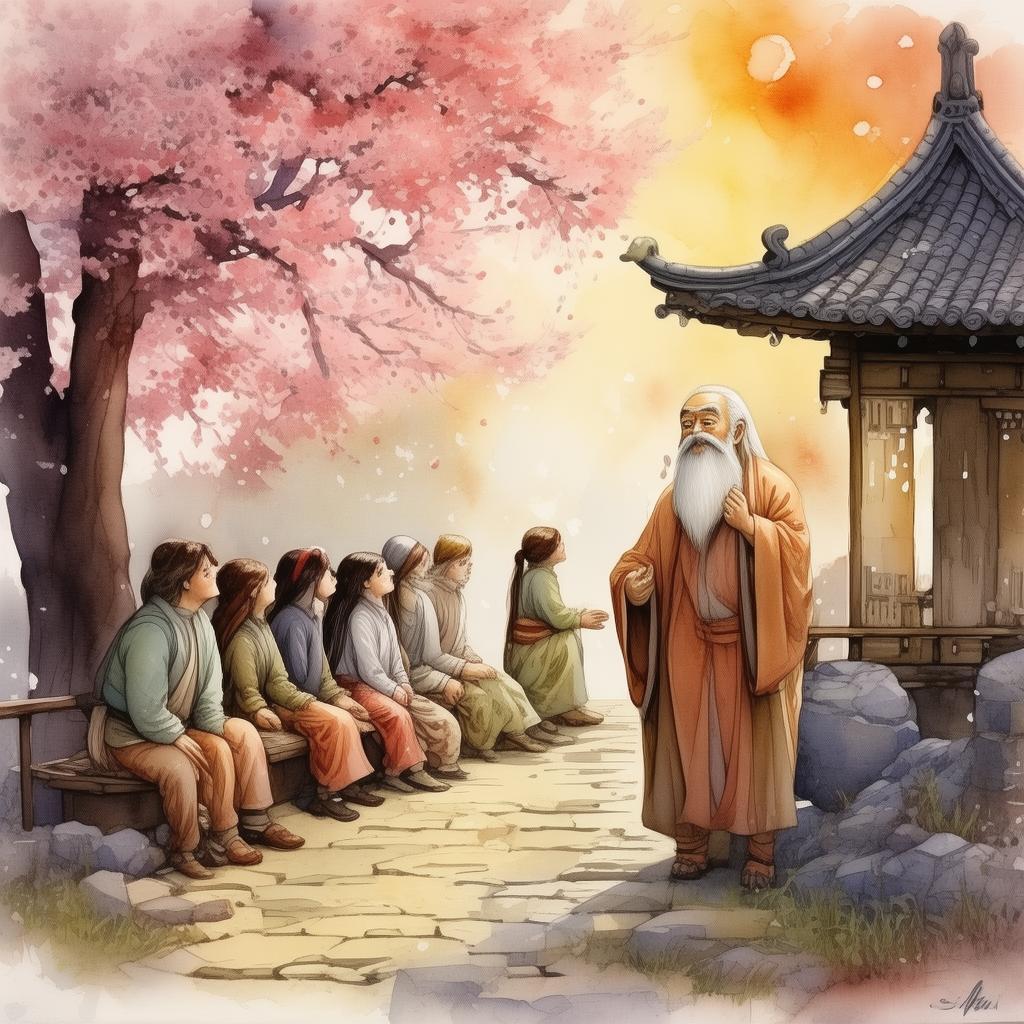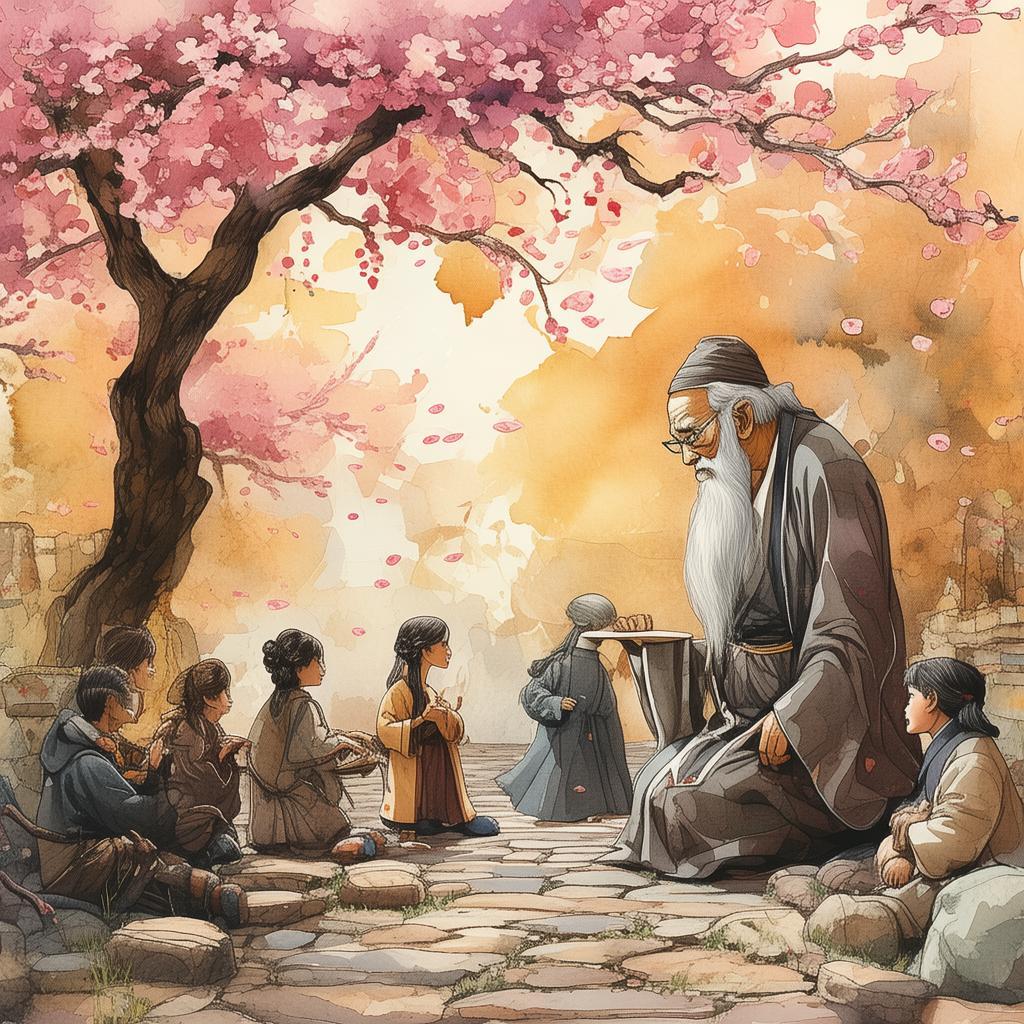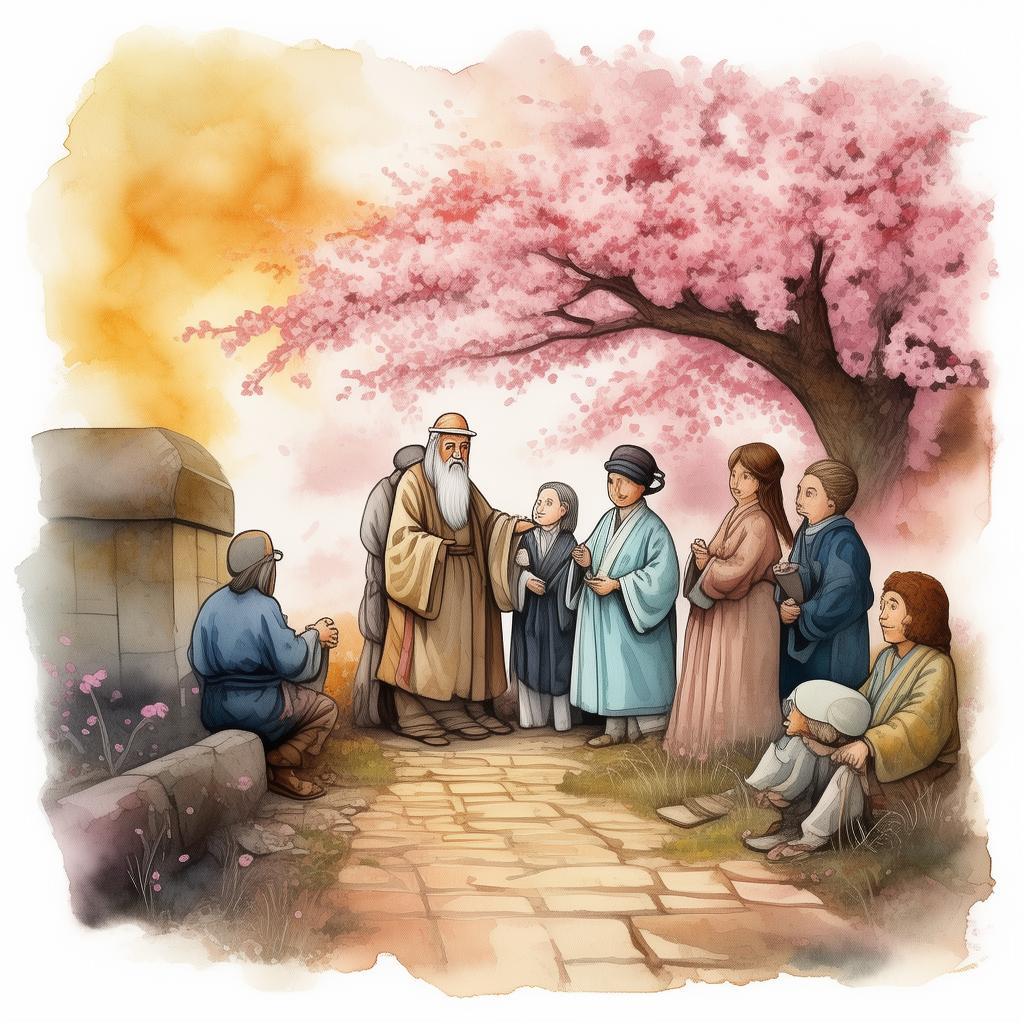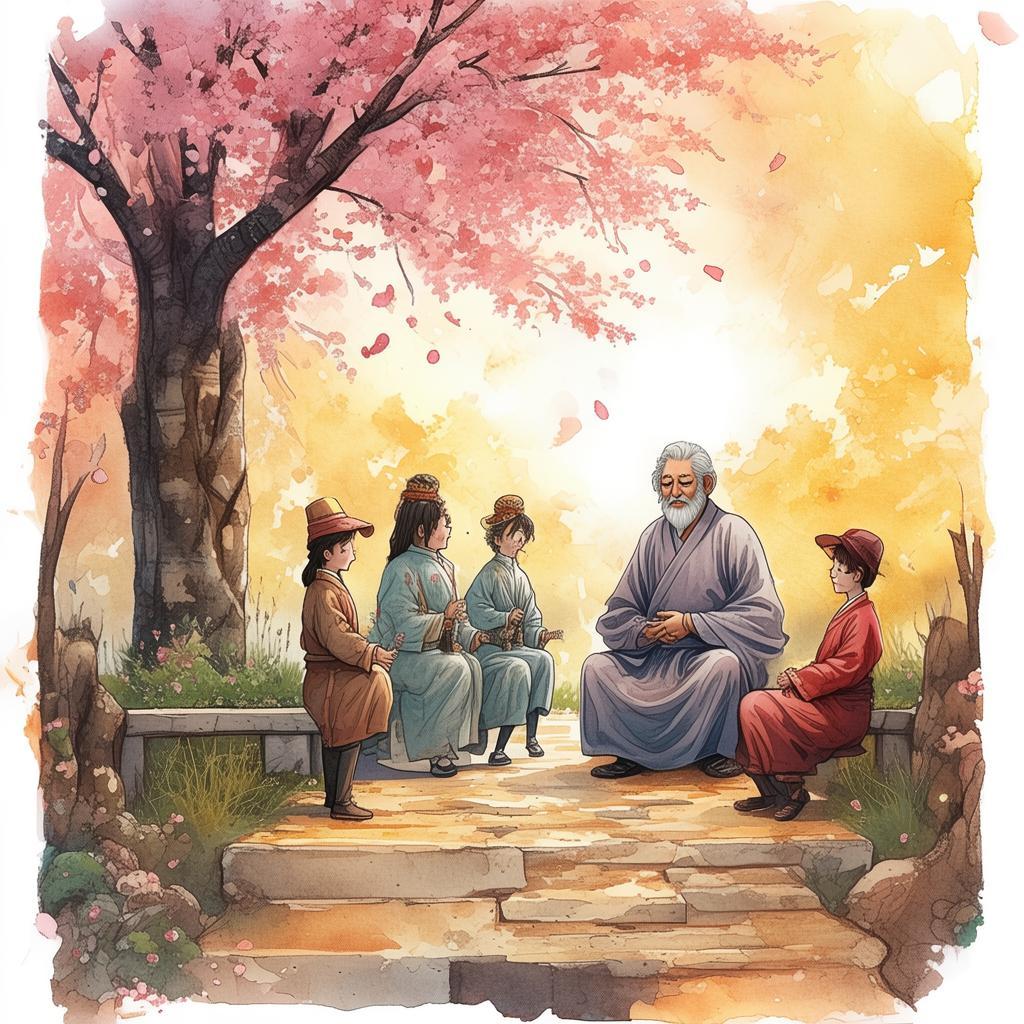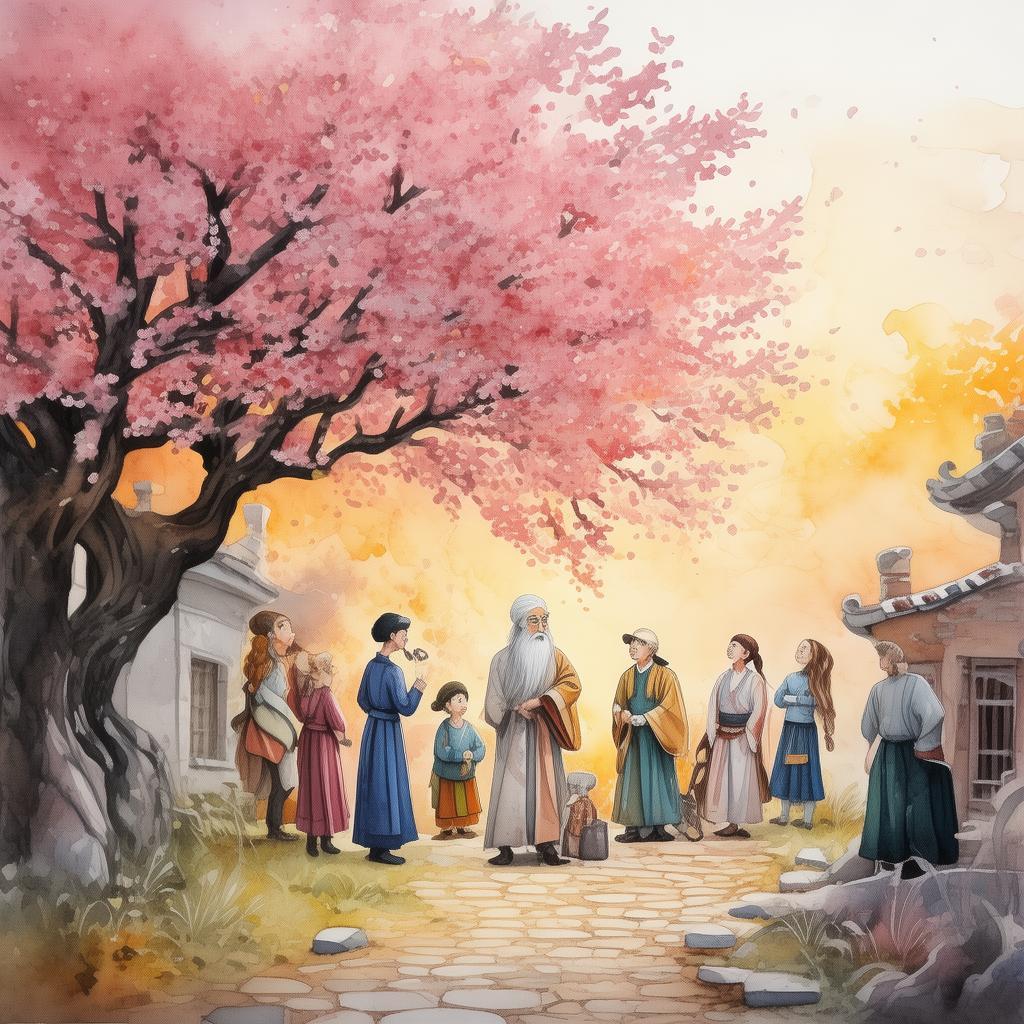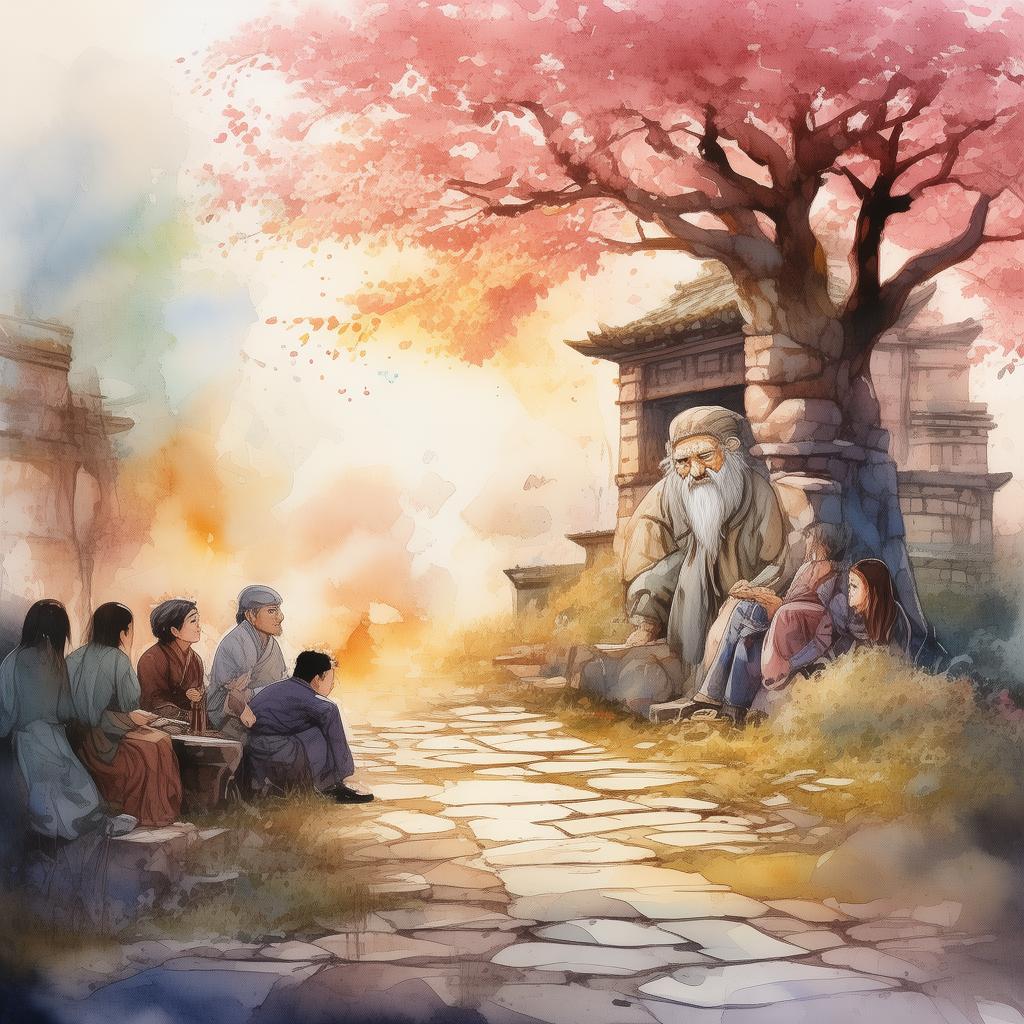Whispers of the Ancient and the New
In the heart of a serene village nestled between rolling hills and whispering forests, there lived a young apprentice named Ming. Ming was a student of the ancient art of calligraphy, a craft that had been passed down through generations. His master, an elderly man known as Master Li, was a guardian of the village's most sacred secret: a collection of ancient scrolls that contained the wisdom of their ancestors.
Master Li often spoke of the proverb, "Embracing the New to Unleash the Old," which he believed was the key to their village's survival. He would say it with a knowing smile, as if it held the secret to the world beyond the village's walls. Ming, however, was more intrigued by the art of calligraphy itself, and the proverb was just a sidenote in his quest for mastery.
One crisp autumn morning, as the sun painted the sky with strokes of orange and red, Ming found himself alone in the study room. The room was filled with the scent of aged paper and ink, and the scrolls, bound in silk and leather, lay dormant on their shelves. Ming's curiosity piqued as he noticed a scroll that seemed to beckon him with its ancient, faded script.
With a gentle hand, Ming pulled the scroll from its resting place. The parchment was brittle, and as he unrolled it, a delicate pattern of serpents began to emerge. The serpents were intertwined, their bodies coiling around each other in an endless embrace. The scroll was blank except for the pattern, and Ming's mind raced with questions.
"Master Li," he called out, "what does this mean?"
The old man appeared at the doorway, his eyes twinkling with a mix of amusement and wisdom. "It is the symbol of the ancient proverb," he replied. "The serpents represent the past and the future, forever embracing each other. To embrace the new is to understand the old, and to unleash the old is to find the true essence of the new."
Ming's heart raced with excitement. He realized that the scroll was not just a piece of art, but a guide to the world beyond the village. He spent the next few days translating the scroll's cryptic messages, each one revealing a piece of the village's hidden legacy.
One night, as the moon hung low in the sky, Ming discovered a hidden chamber beneath the study room. Inside, he found a collection of artifacts, each one telling a story of the village's past. Among them was an ancient book of alchemy, a forgotten art that had been lost to time.
Ming's master had always spoken of the alchemy of life, of how the old could be transformed into the new. The book spoke of a ritual that could awaken the ancient wisdom within the scrolls, a ritual that would unleash the old to embrace the new.
With trembling hands, Ming began the ritual. He chanted the ancient words, his voice echoing through the chamber. As the incantation reached its climax, the scrolls began to glow, their pages fluttering with an ancient energy.
The village was transformed. The old ways were no longer just memories but a living force, guiding the villagers in their daily lives. Ming found himself using the alchemy of the ancient book to heal the land, to bring prosperity to the village, and to protect it from the darkness that lurked beyond its borders.
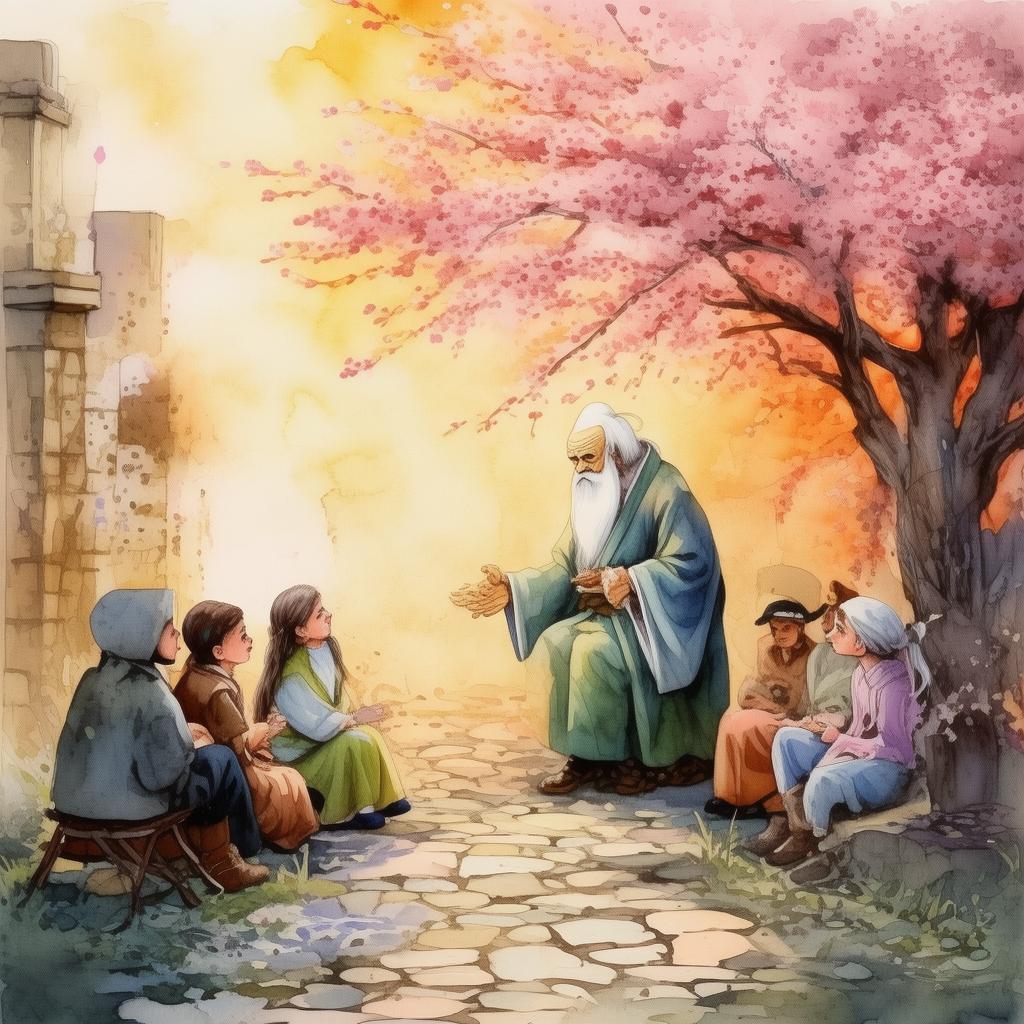
The villagers marveled at the changes. Ming's master, who had always been a figure of mystery, was now revered as a sage, a man who had embraced the new to unleash the old.
Ming, however, knew that his journey was far from over. The ancient scroll had shown him that the past and the future were not separate entities but two halves of the same whole. He had learned that true wisdom lay in understanding the interconnectedness of all things.
And so, Ming continued his journey, a journey that would take him beyond the village and into the heart of the world. He carried with him the ancient wisdom, the alchemy of life, and the knowledge that embracing the new to unleash the old was the key to a future filled with endless possibilities.
As the years passed, Ming's name became legendary. He was known not just as a master of calligraphy and alchemy but as a guardian of the ancient proverb. His story was told in hushed tones, a tale of a young apprentice who had embraced the new to unleash the old, and in doing so, had reshaped the world around him.
✨ Original Statement ✨
All articles published on this website (including but not limited to text, images, videos, and other content) are original or authorized for reposting and are protected by relevant laws. Without the explicit written permission of this website, no individual or organization may copy, modify, repost, or use the content for commercial purposes.
If you need to quote or cooperate, please contact this site for authorization. We reserve the right to pursue legal responsibility for any unauthorized use.
Hereby declared.
